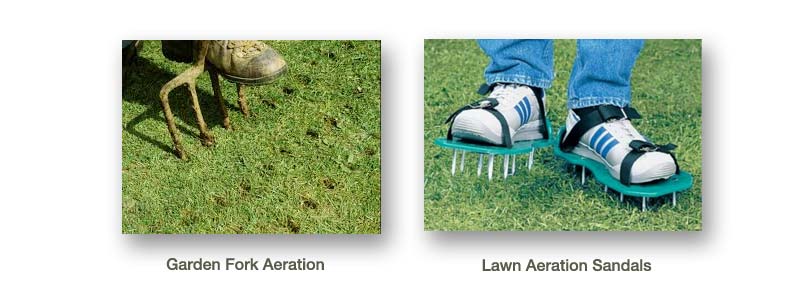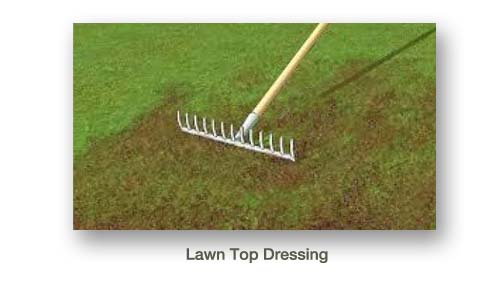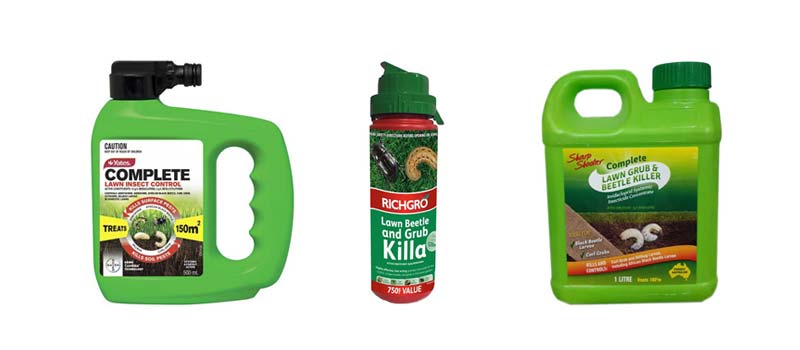Like most plants, grasses need light, moisture and air to thrive but many lawns become compacted over time, restricting the ability of the grass to access sufficient air and moisture to grow strongly. Your lawn will look increasingly thin and lacking vigour, even to the point of bare patches appearing as the grass dies back.
Then there's the attacks of lawn grubs. These get under the soil and get chomping on the grass roots - you can't see the source of the problem but brown patches appear and then die off to become bare.
Everyday traffic will compact a lawn, but it may not be evenly distributed so you can end up with unsightly undulations. And of course when it rains the water cannot drain away easily and puddles may form.
All these are reasons to get to work on your lawn to renovate it and return it to a verdant carpet of healthy grass once more.
Just be mindful that you won't have overnight success - lawn renovation takes time and patience but will reward you for the effort.
Aeration:
THE most important task for any lawn, any time. Roots need air around them, they breathe just like we do. So break up and lift compacted soil simply by plunging a fork into the soil, give it a wriggle, extract the tines and then repeat, repeat, repeat.
Its hard work so take it steadily, work up a rhythm, wear protective shoes and bend you knees a little to take the strain off your lower back.
In some markets you can find Lawn Aeration Sandals that are literally just a solid sandal base with nails protruding. They're not exactly fashion statements but they take the back breaking effort out of the job as you walk awkwardly across your lawn, your body weight pushing the nails down into the soil. Geeky? Yes. Useful? Very.

If you have significant bare patches then this is a good time to sprinkle some grass seed over the aerated area as many seeds will fall into the air holes, giving them a better chance of germination. Water it in well and don't walk over it for a week or so as the seeds will stick to your shoes.
De-Thatch:
A tired and weedy lawn that doesn't necessarily have bare patches but is just lacking in vigour needs to be de-thatched, again to ensure adequate air and moisture can get down to the roots. Many common lawn grasses will form a dense mat of live and half dead grass just under the top level green grass. It will probably be springy and will encourage moss and weeds to collect and grow, stealing nutrients, air and moisture from your grass.
If you are a keen gardener then you may have a scarifying rake. These are the most efficient way to de-thatch a lawn as they have tough, sharp tines that will tear through the thatch. If you have one with wheels then it requires less effort - though I'd say that both formats require plenty of energy to ensure you have broken up the thatch adequately.
If you don't have a scarifying rake them a stiff, metal tined lawn rake will also do a good job, but you will have to perhaps do more passes to ensure even clearance of unwanted materials.

An ordinary garden rake can also be used but you have to be careful not to overdo it and rip your lawn to shreds in the process. Its also VERY hard work. The idea is to leave as much grass in place as possible while ripping out the dead under layer, weeds and moss. This will need to be raked off after you have finished but I sduggest you don't put it on your compost heap, rathermore put it in the council green cleanup bin. It will be full of grass and weed seeds so you won't want that in your compost.
Top Dressing:
This is most often done in spring as the grass starts to grow again. It literally involves just spreading a layer of fresh sand and topsoil over your lawn and raking it in. Apart from filling in the uneven undulations, a good top dressing will also get some gritty soil in amongst the layers of grass to stimulate strong growth. Adding in some crumbly compost and slow release fertiliser pellets into your top dressing will also help to provide a long lasting food source, ensuring a healthy and attractive lawn all season long.

Don't cover your lawn too deeply with top dressing or you may suppress growth beneath it. Grass needs #1. Light #2. Water #3. Air in that order so make sure it can access these easily. As such, top dressing in winter is not recommended as it grows a lot less and sometimes goes quite dormant over the colder months so an extra layer of top soil will only restrict access to light.
Lawn Beetles and Grubs:
If its late summer to autumn and you have brown patches even though you might have scarified enthusiastically, lawn grubs may still be lurking under the surface of the soil. So its important to get rid of them and the best way is with a garden chemical. There are many on the market that are sold either as
#Granular (sprinkle on),
# Hose-on (hose attachment)
# or application with a watering can.
They generally work both on contact and systemically, being drawn up into the grass to kill the pests as they eat into them.
Bugs killed by these include Black Beetle, Curl Grub, Lawn Armyworm, Cutworm, Billbug Larvae and Adults, Argentine Stem Weevil and Adult Scarabs.
All three chemical solutions illustrated below are available from the GardensOnline Shop
